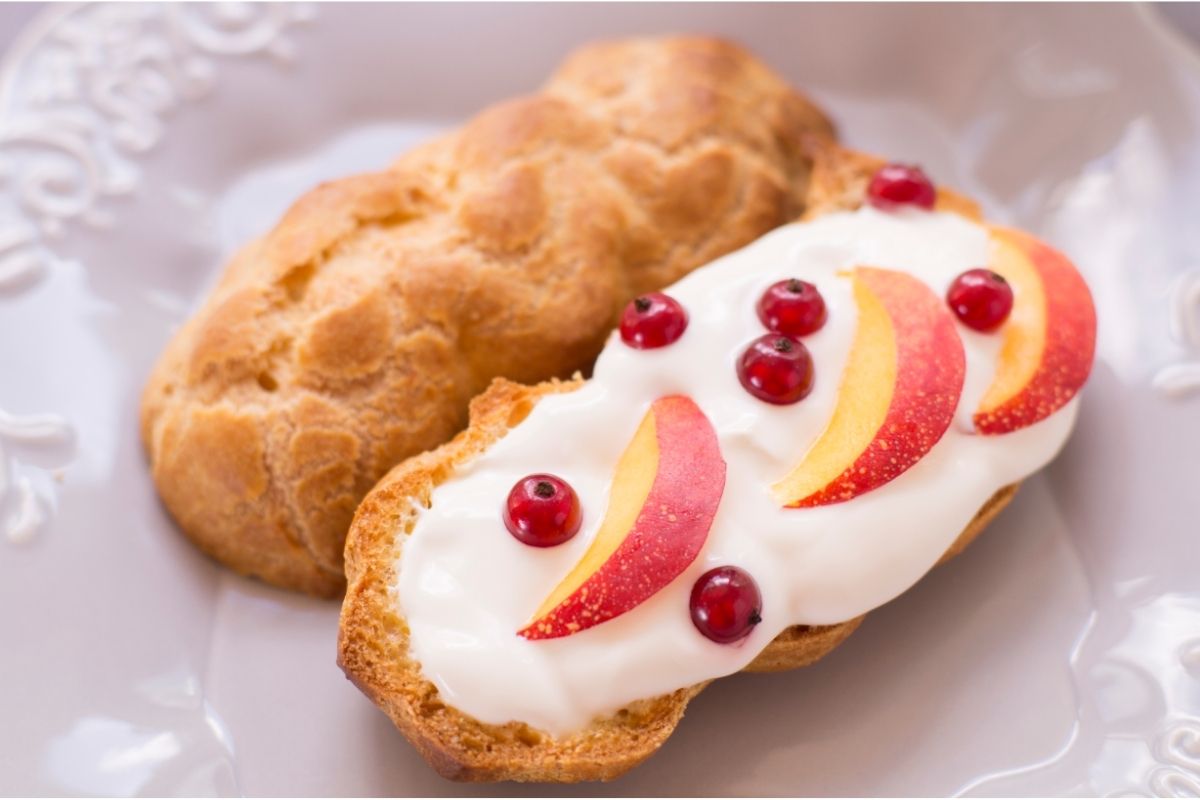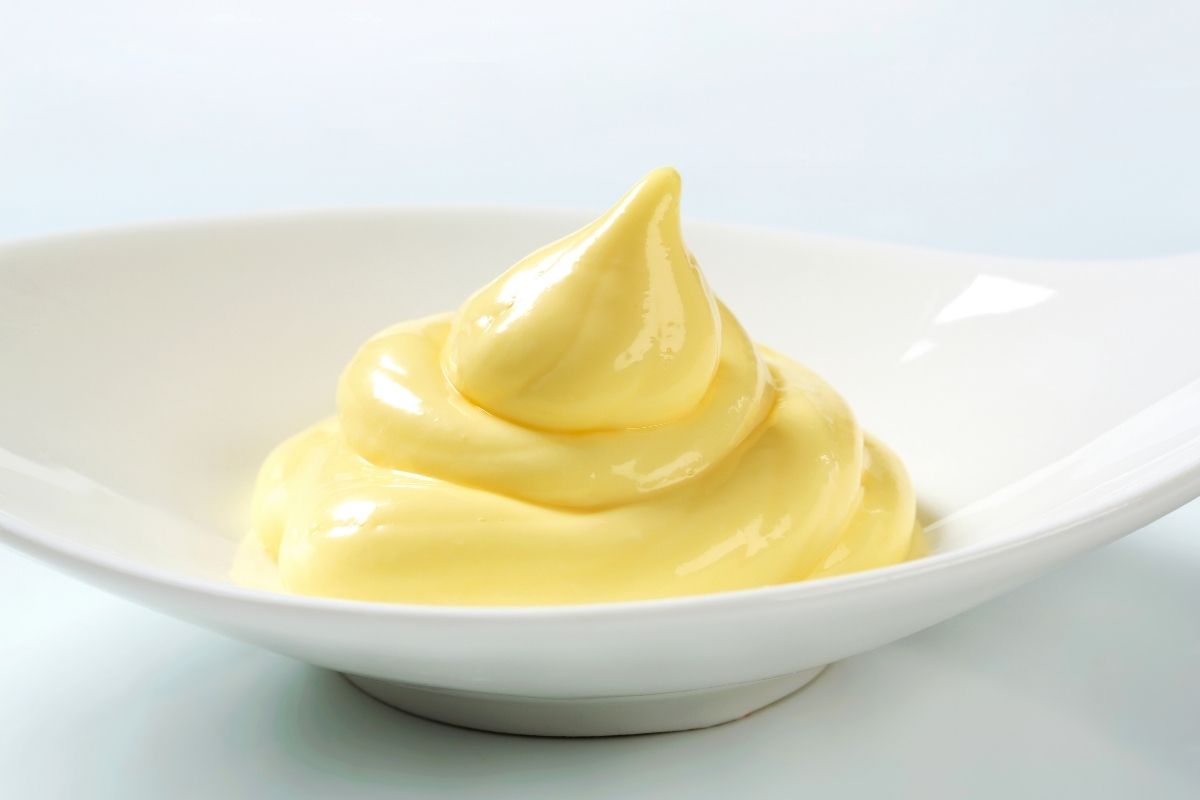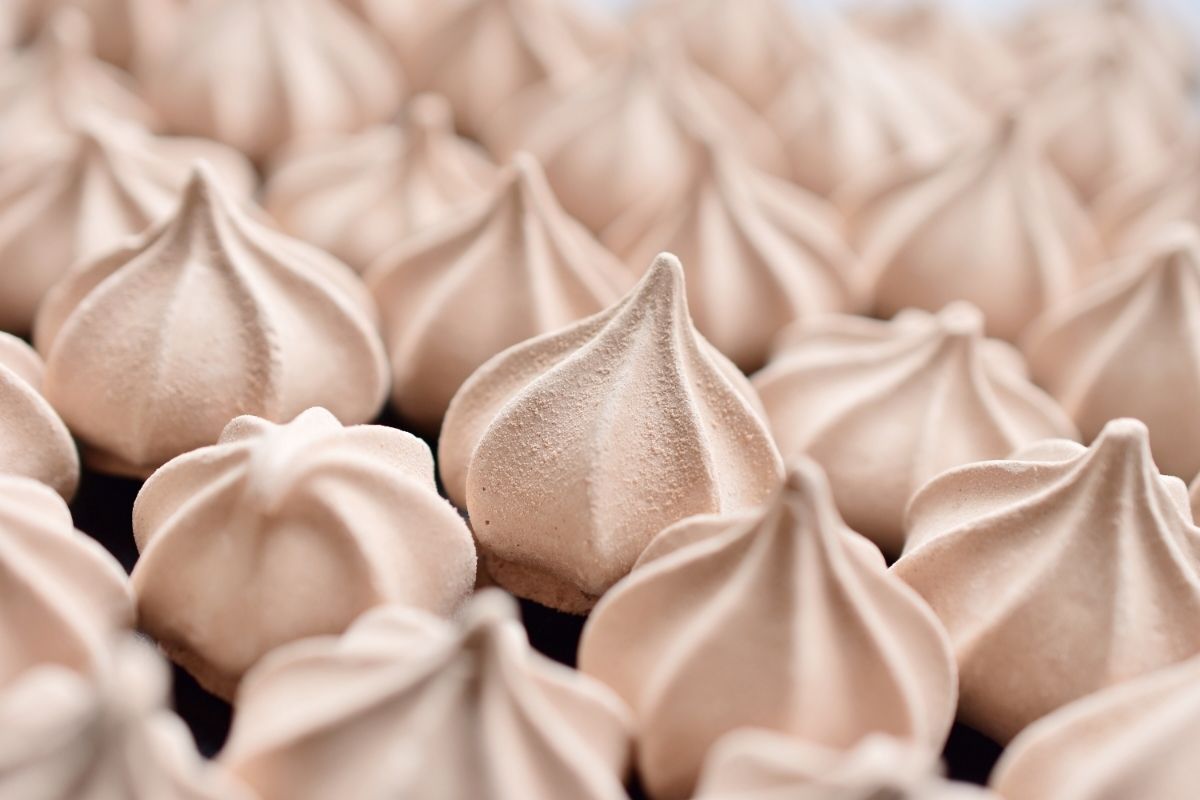What is Diplomat Cream?
Diplomat cream, also known as crème diplomat in French, combines unsweetened whipped cream and pastry cream. But precisely what is diplomat cream?
It is a cupcake and sponge cake filling and is also used to fill doughnuts and choux delicacies like éclairs and cream puffs. The cream is the base for fruit tarts topped with fresh fruit or between the layers of a mille-feuille.

Diplomat Cream vs. Bavarian Cream – The Difference
Diplomat cream (crème diplomat in French) is a combination of unsweetened whipped cream and crème pâtissière (pastry cream). Therefore Diplomat cream can be used for sweet or savory dishes.
Bavarian cream is used as a sweet filling then served as a dessert.
What is Creme Diplomat Used for?
Creme Diplomat is a popular filling for cupcakes and sponge cakes. In addition, you can use it to fill doughnuts and choux pastries such as éclairs and cream puffs. You can also use the cream as a diplomat filling or topping for desserts and pastries, such as between the layers of a mille-feuille or as the base for fresh fruit tarts.
A Diplomat Cream Recipe to Make at Home
Vanilla Diplomat Cream
Prep: 30 minutes
Chilling time: 8 hours
Cook: 10 minutes
Total Time: 4 hours 40 minutes
Servings: –+¼ cup each
Ingredients
Vanilla Pastry Cream
- 2 cups milk 480 ml, preferably 3.5% or 2% milk
- 2.6 oz (75 g) sugar 6 tbsp
- Pinch of salt
- 1.2 oz (35 g) cornstarch (cornflour), 3.5 tbsp
- 3 tsp vanilla extract 15 ml
- 3 large egg yolks
- 1.5 oz (43 g) unsalted butter softened
Stabilized Chantilly Cream
- 1 tsp gelatin powder
- 2 tbsp water at room temperature 30 ml
- 2 tbsp heavy whipping cream 30 ml, chilled
- 1 cup heavy whipping cream 240 ml, chilled
- ¼ cup confectioner’s sugar
Instructions
Pastry Cream with Vanilla
- In a medium saucepan, heat the milk over medium-high heat. Bring to a low boil, then reduce to a low simmer.
- Combine the sugar, egg yolks, cornstarch, vanilla extract, and salt in a mixing dish while the milk is almost warm. Whisk until the mixture is thick and smooth. Set aside this bowl with the egg mixture on a towel or napkin until the milk comes almost to a boil (to prevent the bowl from slipping when whisking in the next step)
- Remove the milk from the heat as soon as it simmers or bubbles. Slowly pour half of the hot milk into the egg mixture in a narrow stream, WHISKING CONSTANTLY to temper the egg mixture. Return the egg mixture to the hot milk in the saucepan once the eggs get tempered.
- Heat the custard base over medium heat, constantly whisking, until it begins to thicken – around one to two minutes, depending on your stove’s heat and the size of your saucepan.
- Allow the custard to boil while stirring (the custard will release bubbles). After the first bubbles breach the surface, reduce the heat to low, cook for another one to two minutes, and then whisk frequently for 30–60 seconds.
- Remove the skillet from the heat and stir in the butter. Whisk in the butter until it’s well incorporated.
- Pour the custard into a bowl and cover with plastic wrap right away, making sure the plastic wrap touches the entire surface to avoid forming custard skin on top. You can also use a sieve to strain the custard to remove any lumps.
- Allow the custard to cool to room temperature before placing it in the refrigerator to refrigerate for several hours or overnight.
Stabilized Chantilly Cream
- In a cold metal bowl, place one cup of chilled whipping cream. Mix in the sugar until it dissolves completely. Refrigerate the bowl until you’re ready to whip it.
- Fill a small microwave-safe bowl halfway with water. Mix in the gelatin by sprinkling it on top. Allow ten minutes for the gelatin to bloom in the water.
- To dissolve the blooming gelatin, microwave it for around 10–20 seconds. However, do not allow it to boil.
- Temper the gelatin mixture with one to two tablespoons of chilled heavy cream.
- Whisk the cold heavy cream-sugar combination at high-speed, then quickly pour in the gelatin mixture. Make sure the gelatin isn’t placed straight over the whisks, as this will cause it to harden and clump.
- To integrate the gelatin, whisk the heavy cream on high for a few seconds.
- Reduce the speed to medium-high and whisk the cream until it just begins to form mid peaks after the gelatin gets added.
- Manually whisk the cream the remainder of the way until stiff peaks form, using a whisk. Make sure the heavy cream does not curdle or become gritty.
- Use right away.

The Different Pastry Cream Variations
- Channel island extra thick double cream: It’s a rich, thick cream made using Guernsey and Jersey cow’s milk that you may eat straight from the tub.
- Chantilly cream: This is another term for vanilla-flavored whipped cream, prepared by mixing whipped cream into pastry cream to create a delectable dessert.
- Clotted cream: Clotted cream is the thickest and richest sort of cream available, and it traditionally gets prepared in Devon or Cornwall. To make the golden crust: scald it gently.
- Crème fraîche: This is a fresh cream thickened and given a somewhat sour taste by a bacterium culture. It’s ideal for spooning.
- Double cream (affectionately known as “country-style”): Fresh cream in this form is the most versatile. You can serve it straight or whipped.
- Extra thick single cream: This product has the same fat level as single cream (18%), but it got homogenized to produce a thick, spoonable consistency akin to double cream: you shouldn’t whip it.
- Flavored creams: Brandy, Calvados, and cinnamon creams are prepared from a combination of double cream, sugar, and alcohol and are available throughout the Christmas season. Read our article and find out Italian Christmas desserts and how to make them.
- Goat’s milk double cream: Goat’s milk double cream has an ice white appearance and a smooth, mild flavor made from pasteurized goat’s milk from St. Helen’s Farm in Yorkshire.
- Half-and-half (also called coffee cream): It is a half-and-half blend of cream and milk. This cream is too thick to be beaten.
- Heavy cream or heavy whipping cream: It is a type of cream that is thick and creamy and contains the most milk fat, and is denser than whipping cream, tripling in volume.
- Long-life cream (UHT): It got an ultra-heat treatment (UHT) to extend the shelf life of long-life cream; it got an ultra-heat treatment (UHT). It is heated to high temperatures for a short time to stabilize it.
Types of Diplomat Cream Variations
- Crème Bavarois: It is also known as Bavarian cream. It has a base of crème Anglaise (the same basis as ice cream) and whipped cream. Gelatin is sometimes in diplomat cream, but it isn’t necessary.
- Crème Chantilly: Also known as Chantilly cream, is a type of pastry whipped cream.
- Crème Chiboust: Also known as St. Honoré after the same-named dish is a pastry cream and meringue mixture stabilized with gelatin.
- Crème mousseline: This is a pastry cream and soft, unsalted butter mixture known as buttercream. It is soft and delicate at room temperature, but as the butter solidifies, it starts to stiffen up in the refrigerator.
- Meringue: Egg whites are whisked to firm peaks and blended with powdered sugar to make meringue, the Italian and Swiss buttercream base.

Our Top Creme Diplomat Making Tips
Use just full-fat heavy cream. If possible, make diplomat cream with straight heavy cream. Heavy pastry whipping cream is commonly available in grocery shops, but stabilizers help it whip up smoothly. If you use the top-quality cream, heavy cream will whip up nicely on its own.
Decide what you’re going to do with the cream. For example, there’s no need for gelatin in diplomat cream if you use it to fill cupcakes or cream puffs. However, you can use gelatin to help the cream set into a complex mixture if you want to use it for tarts or any other dish that demands a clotted cream for a clean cut.
Check to see if the heavy cream is chilled. Room temperature cream whips up far better than cold cream. Place the bowl of your stand mixer in the refrigerator for a few hours before you want to whip the cream to ensure it stays cool. Also, keep the heavy cream refrigerated until the very last moment before you plan to start beating.
Start by tempering the egg mixture—whole heating milk and whisking it into an egg yolk combination in numerous procedures in preparing pastry cream. If you pour the hot milk into the egg mixture all at once, it will scramble, resulting in lumpy pastry cream.
To avoid this, gradually add the hot milk to the egg mixture while whisking continuously to allow the egg mixture to come to temperature. The smoother the pastry cream turns out, the more even the temperature of the milk and egg mixture is.
Pour the pastry cream through a strainer. Even if the eggs are perfectly tempered, lumping can occur. Before serving, strain the pastry cream through a mesh strainer to remove any lumps or burnt bits from the bottom of the pot. After you’ve strained the pastry cream, add the unsalted butter.
The Final Say
Do you love diplomat cream? Would you like to know how to prepare it yourself? Use the recipe in this article and the tips to make your favorite diplomat cream.

Community of passionate writers and content creators who share a love for Italian heritage, culture, travel, food, and the Italian-American community. Our mission is to celebrate Italy’s rich history and traditions and connect with others who share the same passion.

